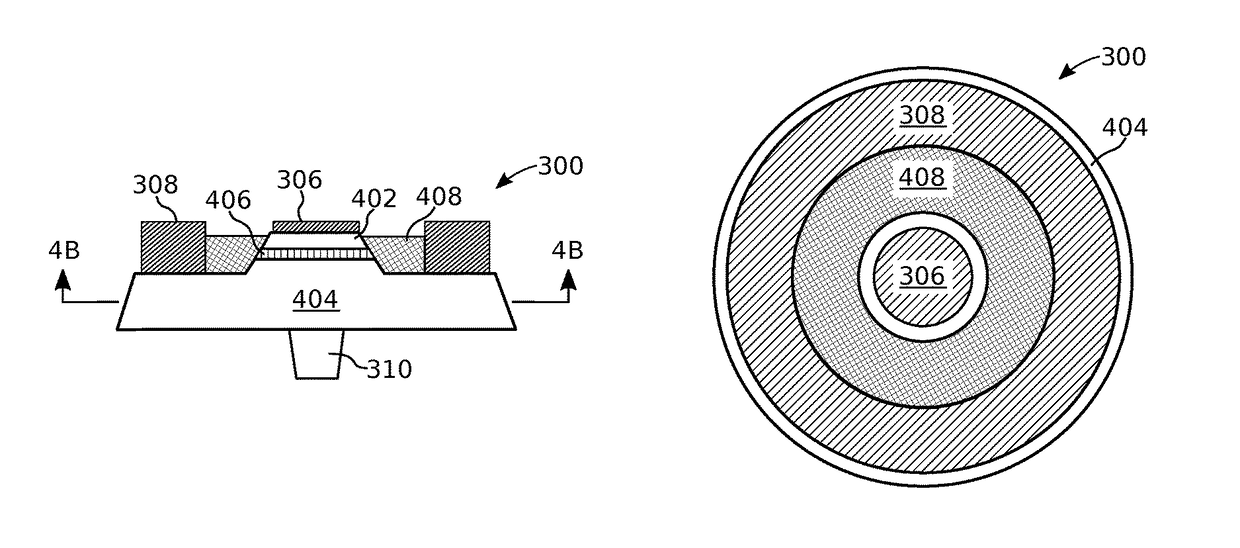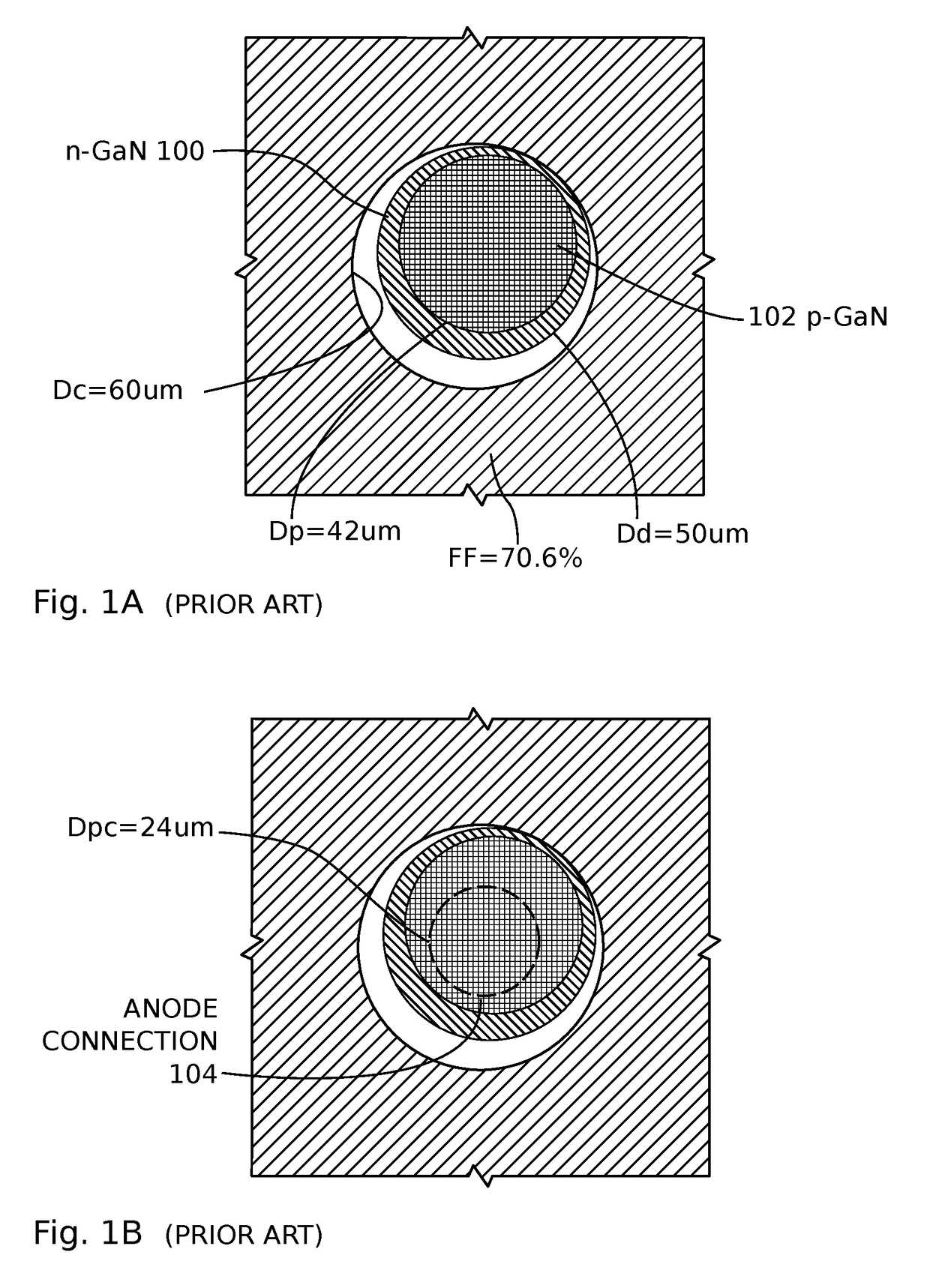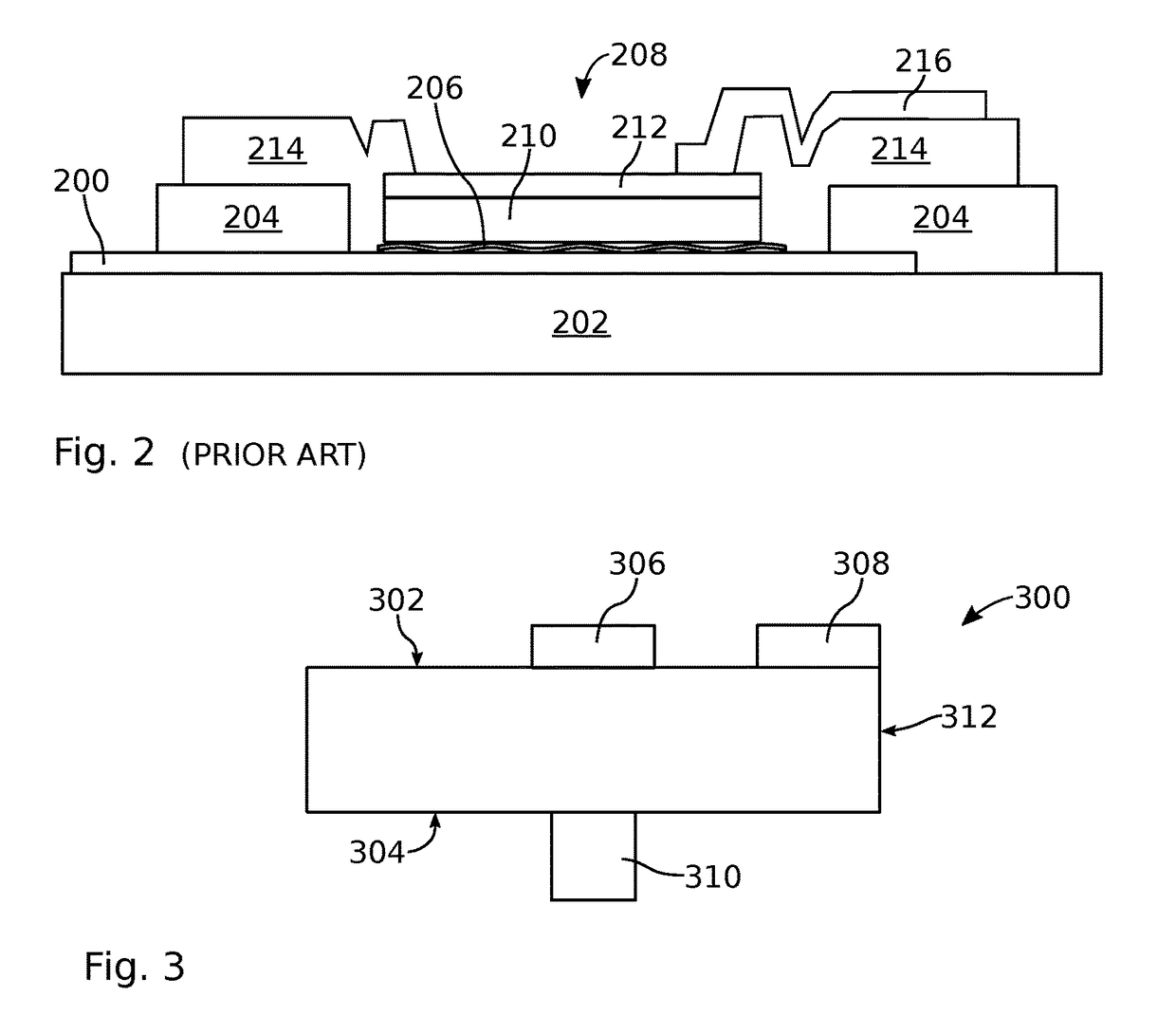Display with surface mount emissive elements
a technology of emissive elements and display screens, applied in the field of integrated circuits, can solve the problems of simple driving schemes that are necessarily limited to a relatively small number of rows, and achieve the effects of high reliability, reasonable cost, and large area of high dynamic range display
- Summary
- Abstract
- Description
- Claims
- Application Information
AI Technical Summary
Benefits of technology
Problems solved by technology
Method used
Image
Examples
Embodiment Construction
[0050]FIG. 3 is a partial cross-sectional view of a surface mount emissive element. The surface mount emissive element 300 comprises a top surface 302, a bottom surface 304, a first electrical contact 306 formed exclusively on the top surface, and a second electrical contact 308 formed exclusively on the top surface. By “exclusively on the top surface” it is meant that the electrical contacts or electrodes do not extend over the emissive element sides 312 or bottom surface 304. The electrical contacts may be a metal, doped semiconductor, or transparent conductive oxide (TCO) such as indium tin oxide (ITO). Although not explicitly shown as a distinct layer, the electrical contacts 306 and 308 may be solder or solder-coated (e.g., a eutectic solder) for subsequent connection to an emissive substrate. The emissive element 300 further comprises a post 310 extending from the bottom surface 304. In one aspect, the post 310 is centered in the middle of the bottom surface 304. One example o...
PUM
 Login to View More
Login to View More Abstract
Description
Claims
Application Information
 Login to View More
Login to View More - R&D
- Intellectual Property
- Life Sciences
- Materials
- Tech Scout
- Unparalleled Data Quality
- Higher Quality Content
- 60% Fewer Hallucinations
Browse by: Latest US Patents, China's latest patents, Technical Efficacy Thesaurus, Application Domain, Technology Topic, Popular Technical Reports.
© 2025 PatSnap. All rights reserved.Legal|Privacy policy|Modern Slavery Act Transparency Statement|Sitemap|About US| Contact US: help@patsnap.com



